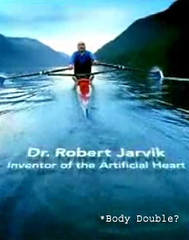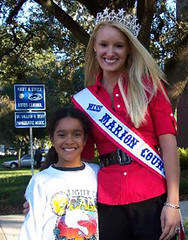The writers strike is over, but the impact is permanent well beyond payment for digital distribution. People want change, and not just the actors who will likely ask for digital distribution compensation as well.
Advertisers are hoping networks adopt a year-round television schedule as opposed to the nine-month schedule currently employed by major networks. Year-round scheduling, which has been tried and tested positive by many cable networks (which purposely avoid sweeps to launch new programming), would allow viewers to consider more new programs.
“There’s a lot of hype in September,” Charlie Rutman, chief executive for the North American operations of MPG, a media agency owned by Havas, told The New York Times. “And by November, half the shows aren’t on anymore.”
Year-Round Means Better Metrics
Such a move would require a greater overhaul of the Nielsen rating system, which relies primarily on sweep weeks for its largest gathering of ratings. Currently, only a fraction of a few million Nielsen families are counted year round.
The rating system has been a hotly debated topic by consumers since last May, when fans of the Jericho television show (which aired its first episode of the second season last night) criticized questioned its accuracy and dismissal of online DVR viewership, which some estimates put at 58 to 70 percent of all cable households. Eventually, Jericho voices were joined by the fans of virtually every cancelled show.
While Nielsen has made changes since last May, including some semblance of DVR counts and video-on-demand (VOD) analytics, it continues to draw fire from, well, everyone. Enough so that Nielsen apologized for the “systemic problems in the delivery of its national ratings data” since the beginning of the 2007-08 TV season. Enough so that CBS and TiVo have an arrangement. Enough so that everyone is looking for alternative metrics while reporters mention that the rating system is less than perfect.
A year-round season is something that some networks, like NBC, are already working toward. NBC recognizes that it would save money because fewer pilots would need to be produced in the spring for the fall. It might also mean that networks wouldn’t feel pressured to put as many shows on the bubble, simply to take a chance and make a splash with a new show line up every year.
More importantly, it works for consumers because head-to-head show competition is becoming a phenomenon of the past. Consumers simply want great content rather than relying on the old model, which was based on the idea that they would “settle for the best thing on” or spend an hour surfing.
New Media Is All Media
As mentioned in January, old media is dead because the distinction between old and new is fast becoming nonexistent. The graphite is scrawled across the wall …
• Everyone wants a rating system that counts everybody, and breaks out information across various multimedia platforms.
• Everyone wants a fair compensation for actors, creators, and distributors, regardless of how revenue is generated.
• Everyone wants better quality programming that can survive longer than three episodes before being pulled.
• Everyone wants more interaction between fans, cast, and crew because viewers are paying much more attention to their favorite shows.
• Everyone wants engagement beyond passive viewership because, well, because it’s possible.
• Nobody really minds some advertising if the content is free; and advertisers don’t mind paying for programs that people watch.
This is different, but doable. It’s less about reinvention and more about innovation to diminish the difference between what exists and what’s possible.
Even the primary reason for the conclusion of the writers strike is indicative of change. Many people are crediting Peter Chernin, president of the News Corporation, and Robert Iger, chief executive of Walt Disney, for opening sideline talks with Patric Verrone, David Young, and John Bowman. Individual conversations succeeded where group negotiations failed. Sounds almost like a social media solution.
Looking for two more positive outcomes to the writers strike? The United Hollywood blog intends to stick around. It might be a very long time before a network executive ever needs to ask for a pencil. Case closed, well, sort of.

Advertisers are hoping networks adopt a year-round television schedule as opposed to the nine-month schedule currently employed by major networks. Year-round scheduling, which has been tried and tested positive by many cable networks (which purposely avoid sweeps to launch new programming), would allow viewers to consider more new programs.
“There’s a lot of hype in September,” Charlie Rutman, chief executive for the North American operations of MPG, a media agency owned by Havas, told The New York Times. “And by November, half the shows aren’t on anymore.”
Year-Round Means Better Metrics
Such a move would require a greater overhaul of the Nielsen rating system, which relies primarily on sweep weeks for its largest gathering of ratings. Currently, only a fraction of a few million Nielsen families are counted year round.
The rating system has been a hotly debated topic by consumers since last May, when fans of the Jericho television show (which aired its first episode of the second season last night) criticized questioned its accuracy and dismissal of online DVR viewership, which some estimates put at 58 to 70 percent of all cable households. Eventually, Jericho voices were joined by the fans of virtually every cancelled show.
While Nielsen has made changes since last May, including some semblance of DVR counts and video-on-demand (VOD) analytics, it continues to draw fire from, well, everyone. Enough so that Nielsen apologized for the “systemic problems in the delivery of its national ratings data” since the beginning of the 2007-08 TV season. Enough so that CBS and TiVo have an arrangement. Enough so that everyone is looking for alternative metrics while reporters mention that the rating system is less than perfect.
A year-round season is something that some networks, like NBC, are already working toward. NBC recognizes that it would save money because fewer pilots would need to be produced in the spring for the fall. It might also mean that networks wouldn’t feel pressured to put as many shows on the bubble, simply to take a chance and make a splash with a new show line up every year.
More importantly, it works for consumers because head-to-head show competition is becoming a phenomenon of the past. Consumers simply want great content rather than relying on the old model, which was based on the idea that they would “settle for the best thing on” or spend an hour surfing.
New Media Is All Media
As mentioned in January, old media is dead because the distinction between old and new is fast becoming nonexistent. The graphite is scrawled across the wall …
• Everyone wants a rating system that counts everybody, and breaks out information across various multimedia platforms.
• Everyone wants a fair compensation for actors, creators, and distributors, regardless of how revenue is generated.
• Everyone wants better quality programming that can survive longer than three episodes before being pulled.
• Everyone wants more interaction between fans, cast, and crew because viewers are paying much more attention to their favorite shows.
• Everyone wants engagement beyond passive viewership because, well, because it’s possible.
• Nobody really minds some advertising if the content is free; and advertisers don’t mind paying for programs that people watch.
This is different, but doable. It’s less about reinvention and more about innovation to diminish the difference between what exists and what’s possible.
Even the primary reason for the conclusion of the writers strike is indicative of change. Many people are crediting Peter Chernin, president of the News Corporation, and Robert Iger, chief executive of Walt Disney, for opening sideline talks with Patric Verrone, David Young, and John Bowman. Individual conversations succeeded where group negotiations failed. Sounds almost like a social media solution.
Looking for two more positive outcomes to the writers strike? The United Hollywood blog intends to stick around. It might be a very long time before a network executive ever needs to ask for a pencil. Case closed, well, sort of.






















